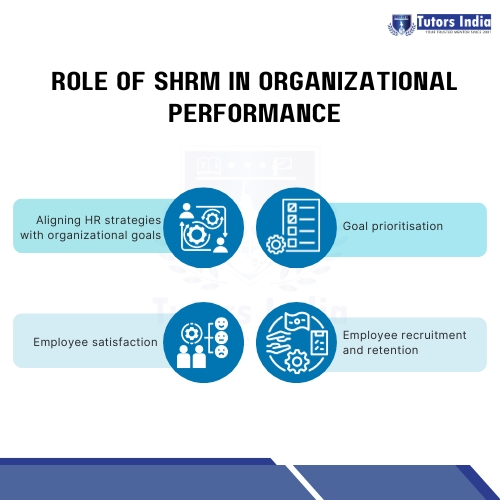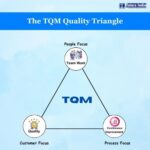SHRM practices for Enhancing Organisational Performance
Human Resource Management and the concept of SHRM
The practice of Human Resource Management (HRM) is based on the assumption that the organisation’s most essential resources are its employees and that organisational effectiveness is heavily reliant on them. For HRM to have a meaningful impact on organisational performance, an adequate set of human resource policies and processes must be designed and properly executed.
Human Resource Management practices are concerned with the management of employees in a company from the time they are hired till they leave the organisation. HRM practices include Strategic Human Resource Management (SHRM), knowledge management, organisational development, resourcing, performance management, learning and development, reward management, and employee relations (Phiri, 2022).
Strategic human resource management (SHRM) refers to the strategy of developing and implementing human resources by modifying policies and practices to improve the abilities and behaviour of the employees. Unlike traditional HR practices, SHRM goes beyond the mundane administrative tasks and dives deep into the strategic aspects of human resource management. SHRM is a key component of every organisation that helps the advancement of individual and organisational performance (Orji, 2022).
Importance of SHRM
Strategic Human Resource Management aims to aid management in achieving excellence by assisting subordinates, providing opportunities for them to strengthen their leadership abilities, and assisting them in identifying their potential. The main goal of using an organization’s strategic goals is to get knowledge about those goals, and strategic human resource management can help with that and uphold the organization’s standards in terms of goals and objectives (Storey et al, 2019).
Maroof (2022) enlists the importance of SHRM for enhancing performance in organizations.

- Aligning HR practices with business strategy
HR plays a vital role in bringing various stakeholders to the platform through successful partnering and collaborative actions. SHRM assists employees in understanding the big picture by ensuring that HR practices are clearly related to the company’s goal and vision.
- Aids in prioritising goals
In today’s changing economy, there are several ways to recruit, train, attract, invest in, and support individuals. However, it is impossible to take up every endeavor at the same time. Aligning with the business plan gives HR a strategic focus and helps with goal prioritization.
- Recruiting the right type of people
While good people are always essential, businesses may require various skill sets or positions at different times. Understanding the strategic goals of the business can help HR attract and retain the right talent at the right time.
- Employee satisfaction
HR practices are critical to employee satisfaction. Furthermore, human resource planning (HRP) and training and development (T&D) were found to have a favorable impact on job satisfaction. Job satisfaction invariably contributes to improved productivity of an organization.
- Employee satisfaction is a component of employee empowerment. Check out our blog to know more about the influence of employee empowerment on SHRM.
Future Research directions
Various researches have been conducted on SHRM and corporate productivity. Some gaps have been identified from the studies which give rise to the following research directions:
- A framework on the various theories influencing SHRM and productivity
The research direction is based on the limitations of a study by Shen (2023). The relationship between Strategic Human Resource Management and corporate performance is dynamic, and multiple theories can be used to explain the relation. A study could focus on integrating Human Capital Theory, Behavior Theory, and Resource Theory.
- A study on the mechanism of SHRM in reducing negative employee outcomes
Research done by Zhai (2022) revealed that psychological empowerment facilitates employee resilience, which encourages corporate productivity. However, some limitations were noted, which include a small number of sample studies selected and a lack of mechanism of how SHRM helps improve employee outcomes. Future research could focus on reducing undesirable employee outcomes.
Conclusion
Human Resource Management (HRM) serves as the cornerstone of any organization’s success, acknowledging that its most invaluable assets are its employees. Among various HRM practices, Strategic Human Resource Management (SHRM) stands out for emphasizing strategic alignment above administrative work. It is critical for improving individual and organizational performance. The significance of SHRM cannot be emphasized enough. SHRM ensures that HR practices are aligned with business strategy and achieve the objectives of the organization. This strategic emphasis allows for goal prioritization and helps to attract the right employees at the right time, supporting employee satisfaction and eventually increasing productivity. Future SHRM research should concentrate on ideas influencing productivity and the methods by which SHRM reduces unfavorable employee outcomes.
About Tutors India
We are a team of expert academic writers and researchers offering comprehensive dissertation help for master’s students. We offer innovative dissertation ideas to master’s students and assist students with:
- Dissertation topic,
- Research proposal,
- Literature review,
- Research methodology,
- Data collection,
- Statistical analysis, and
- Referencing and citation
We ensure that the assistance offered abides by the UK dissertation guidelines, guaranteeing academic integrity. Moreover, we proofread and edit the dissertations to ensure that the dissertations are error- and plagiarism-free.
To know more on how a dissertation is written in different specialties, check out our dissertation examples.
References
- Phiri, K., & Phiri, J. (2022). Strategic Human Resource Management Practices and Organisational Performance: A Case of the National Assembly of Zambia. Open Journal of Business and Management, 10(5), 2461-2483.
- Orji, G., Olaniyi, B. K., Oladele, T. O., & Mhirna, A. (2022). Strategic Human Resource Management and Performance of Selected Deposit Money Banks in Abuja, Nigeria. Britain International of Humanities and Social Sciences (BIoHS) Journal, 4(1), 1-12.
- Storey, J., Ulrich, D., & Wright, P.M. (2019). Strategic Human Resource Management: A Research Overview (1st ed.). Routledge.
- Abdul Maroof, Mohd, Strategic HR for Leveraging Organizational Effectiveness (December 12, 2022). IJCRT | Volume 10, Issue 12 December 2022.
- Shen, R. (2023, July). The Impact of SHRM on Corporate Performance. In 2023 2nd International Conference on Social Sciences and Humanities and Arts (SSHA 2023)(pp. 1159-1166). Atlantis Press.
- Zhai, X., Zhu, C. J., & Zhang, M. M. (2023). Mapping promoting factors and mechanisms of resilience for performance improvement: The role of strategic human resource management systems and psychological empowerment. Applied Psychology, 72(3), 915-936.

 Previous Post
Previous Post